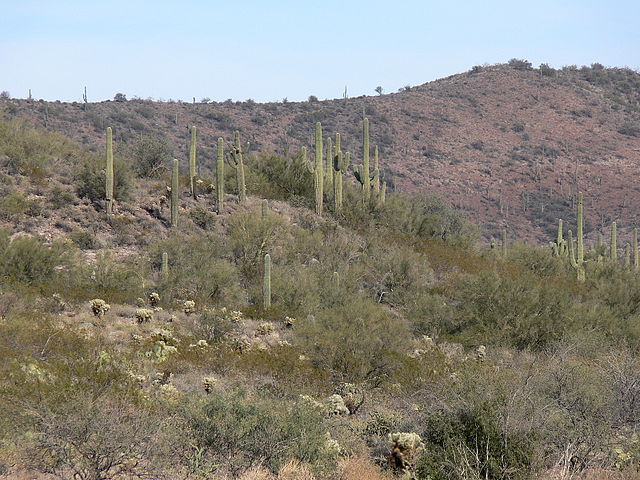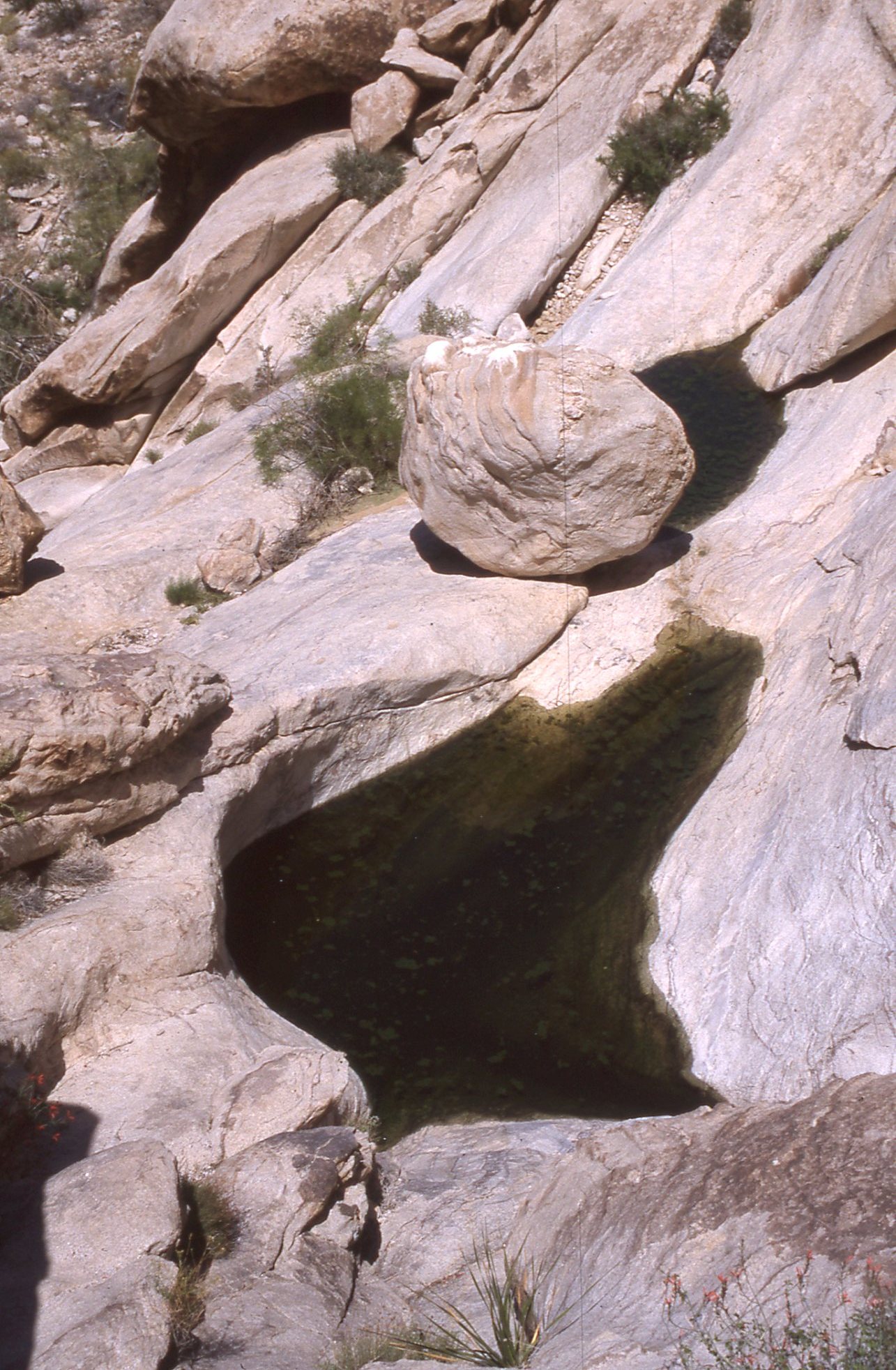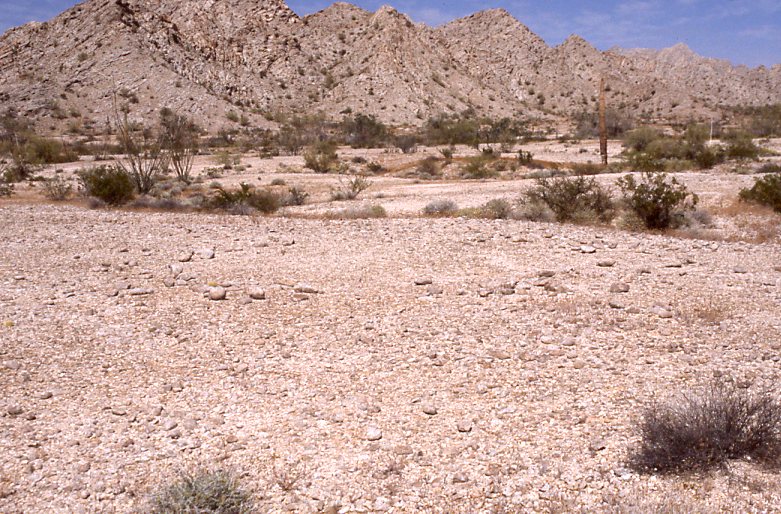At contact the Piman-speaking Indians lived almost entirely within the Sonoran Desert, which is located within the larger Desert Region of the Basin and Range province. The region is arid, though rainfall gradually increases as one moves from the west to the east. It has two rainy seasons, the summer and the winter. Winter rains tend to be gentle and cover a large area; summer rains, in contrast come in the form of highly localized and often torrential thunderstorms. Thus, there is a high degree of spatial variability in the areas that will receive water from the summer rains. Additionally, there is a high degree of temporal variability in these rainfall patterns, such that it is difficult to predict how much rain an area will receive in any one year. This unpredictability in rainfall made living in the region a risky endeavor.
When Father Kino's Jesuits arrived in 1687, they encountered differences in subsistence patterns that they believed reflected differences in cultural identify. They assigned the names "Pima" and "Papago" to these people, and these names have remained throughout the centuries. However, the Indians' term for themselves is "O'odham," meaning "the people," and it is this term that we will use here. The Jesuits further identified four major groups within the people they referred to as "Pima" and "Papago." These were the Sobaipuri, the Hia-Ced, the Tohono O'odham, and the Akimel O'odham. The Sobaipuri quickly became extinct, however, so most accounts deal with the remaining three groups. These groups, while all closely related, maintained slightly different lifestyles due to differences in their environmental settings.
|
|
|
|
|
The Sonoran desert is best known for its large Saguaro cacti, which are restricted to this region Source - https://commons.wikimedia.org/wiki/File:Sonoran_Desert_N_of_Phoenix_AZ_40968.JPG |
Tinaja (watering hole in bedrock) Source - Dr Karen Harry's personal collection |
The Hia-Ced territory. The rock circle in the foreground is a sleeping circle, which once held a temporary shelter Source - Dr Karen Harry's personal collection |
Hia –Ced O'odham
The Hia-Ced O'odham, also called the "no villagers" or the "sand people" by the Spaniards, lived in the driest, westernmost, area of the Piman-speaking territory (see photo of The Hia-Ced territory above). This region receives less than 5 inches of rainfall per year and even less in effective moisture, since much of the rain evaporates before it reaches the ground. The lack of rain limits the type vegetation that can grow in this area, and as a result the Hia-Ced lived in small groups that moved nearly constantly in search of food. Their diet consisted primarily of reptiles, insects and small mammals, and wild plant resources such as mesquite and palo verde beans that could be collected from localized microenvironments. For water, they relied on tinajas (depressions in rocks that filled seasonally with water; see photo of Tinaja above. Shelters were simple windbreaks laid out in so-called "sleeping circles," where the desert pavement had been cleared of rocks. The Hia-Ced, who practiced no farming, disappeared as a separate group by the late 1800s.
Tohono O'odham
To the east of the Hia-Ced lived the Tohono O'odham, also referred to as the "desert people" or "two villagers" by the Spaniards. This area is wetter than that occupied by the Hia-Ced O'odham, receiving between about 5 and 10 inches of rainfall per year. Although permanent rivers are rare, water could be obtained from springs located in the mountains and from lowland ponds filled during summer rainstorms. Plant life is more abundant in this area than in the Hia-Ced region, resulting in a greater variety and abundance of edible resources
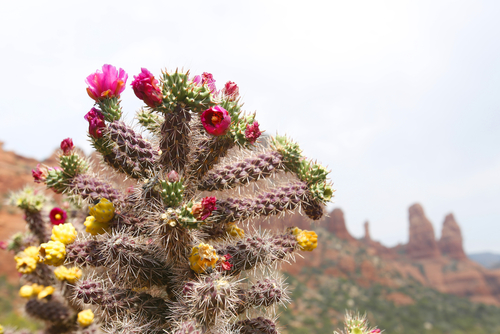
Cholla fruit provided an important source of calcium, with just two tablespoons of fruit providing more calcium than an entire glass of milk
Source - http://www.shutterstock.com/pic-388396321/stock-photo-cholla-cactus-bearing-fruit-sedona-arizona.html?src=ezVMdaUrORH80OU0WSJsWQ-1-43
|
Tohono O'odham using long pole to harvest saguaro fruit, ca. 1907. Source - http://www.loc.gov/pictures/item/94512120/ |
These resources were supplemented with agricultural foods raised using ak chin farming techniques. The Tohono O'odham thus relied on both agricultural and wild resources, and practiced a biseasonal settlement pattern to enable them to exploit both types of resources. In the summer, they lived in large summer villages located close to their agricultural fields, but when the summer ponds began to dry up they moved to smaller, winter settlements near the mountain springs. Due to the substantial variability in summer rains agriculture for the Tohono O'odham was a risky venture. Because of this, most of their diet came from wild resources. During bad years, when most or all of their crops had failed, the Tohono O'odham might help the Akimel O'odham in their agricultural fields in exchange for a portion of the harvest. One important wild resource was the saguaro cactus, whose fruit was collected every summer. Each Tohono O'odham family had a location in a saguaro grove where they would camp for three weeks in late June/early July when the fruit was ripening. These camps were a social event as well as an economic one, since they allowed families to get together, visit, and exchange gossip. Women would go out early every morning with a long stick to knock the ripe fruit off of the tall cacti. Once enough fruit had been collected, they would return to camp where they would spend the remainder of the morning simmering the fruit over a large fire. The resulting liquid would then be strained and the pulp either eaten, made into wine, or dried and stored for later use. The seeds would be saved and later ground into a nutritious flour.
|
Akimel O'odham
The Akimel O'odham lived to the north of the Tohono O'odham on terraces adjacent to year-round rivers such as the Gila, Salt, or Santa Cruz. They relied on crops obtained through floodwater farming supplemented by wild plants and animals collected or hunted on the alluvial floodplain. The Akimel O'odham had the largest villages of any of the O'odham groups and, because they lived by rivers and in single, year-round settlements, were called the "river people" or "one villagers" by the Spaniards. About 40% of their diet came from agricultural foods, the highest percent of any of the O'odham people. Despite their permanence, their houses were constructed of brush walls and were scattered widely from one another in a rancheria settlement pattern, lending the settlements an air of impermanence. In addition to corn, beans, and squash, the Akimel O'odham grew cotton which they used to weave into cloth, and devil's claw which they used for making baskets.
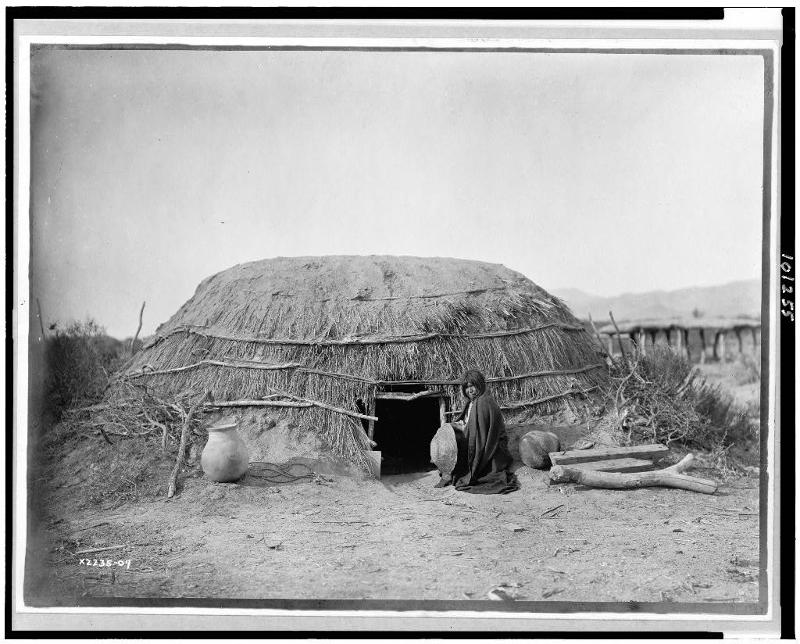
Traditional O'odham house made of brush, 1907
Source - http://lcweb2.loc.gov/service/pnp/cph/3c00000/3c01000/3c01200/3c01255v.jpg
Map of O'odham Past and Modern Reservations
Instructions: Using the slide button on the lower right hand corner, toggle between O'odham Past Territories and O'odham Modern Reservations pages. You can also click on the tabs on the top of the map to learn more. The selected page is highlighted in blue.
Click on next page to continue.

